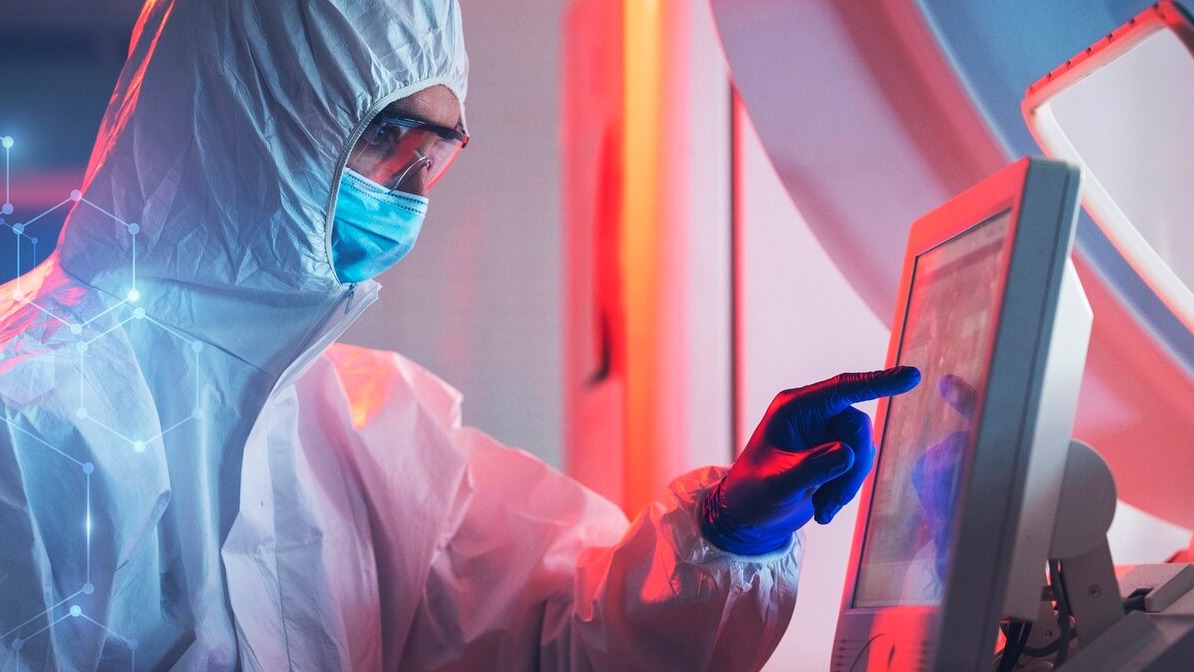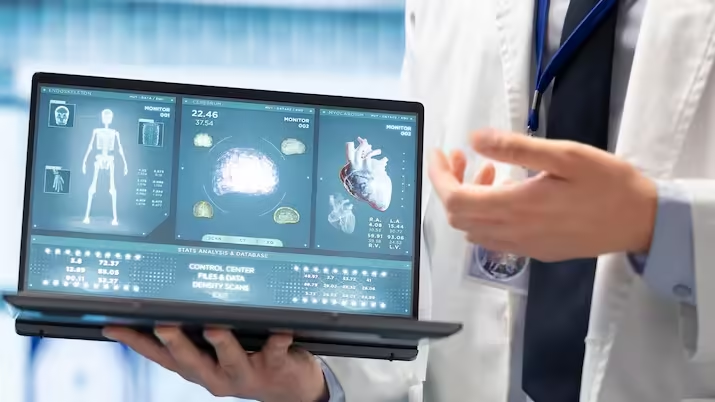Predictive Analytics for Healthcare Cyber Threats: Securing the Digital Frontline
Healthcare is rapidly shifting into a digital-first era, embedding technology deeply within its fundamental processes. The change has unlocked tremendous potential for better patient outcomes and operational efficiencies, but concurrently created a Pandora's box of cyber threats in the process. Since healthcare systems gather, store, and transfer massive amounts of sensitive patient information, the sector's exposure to cyber-attacks has grown exponentially, leading healthcare organizations to look for the best security solutions. One highly effective method that is quickly gaining popularity is taking on predictive analytics in healthcare.
But let's first delve deeper into it, only after that, it's essential to tackle the underlying question: what is predictive analytics in healthcare?
Knowing Predictive Analytics in Healthcare
At its simplest level, predictive analytics in healthcare entails using historical information, statistical modeling, artificial intelligence, and machine learning methodologies to make forecasts of what will happen in the future from past patterns. Though it has historically been utilized to predict clinical occurrences, track patient results, and automate functions, its inclusion in cybersecurity policies marks a revolution within the predictive analytics healthcare sector.
In healthcare, predictive analytics is normally a matter of examining electronic health records, patient demographics, clinical notes, medication information, and so on. But with hospitals and medical providers increasingly embracing digital records, telehealth, wearable devices, and networked medical IoT devices, the cybersecurity threats intensify. Predictive analytics is, in turn, being transformed beyond the boundaries of the clinic to deal with these advanced digital threats.
How Does Predictive Analytics Work in Healthcare Cybersecurity?
Predictive analytics is employed by organizations to anticipate and contain cyber threats in advance, transcending conventional reactive security practices. The process begins with data collection from various sources, such as user behavior logs, network traffic, past security events, medical device communications, and so on. Once the data is collected, advanced machine learning algorithms recognize patterns that point to suspicious activities, anomalies, or possible breaches before their occurrence. This forward-looking threat detection is at the heart of the power and worth of predictive analytics in healthcare cybersecurity.
By applying predictive healthcare analytics, organizations can predict possible security incidents with high accuracy, enabling timely interventions. Advanced AI models recognize patterns embedded in large data sets, spotting even the most minute deviations from standard behavior. For example, predictive analytics can rapidly alert on anomalous login activity, unauthorized access to sensitive patient information, or unusual device communication patterns, all of which might signal coming cyber attacks.
Key Predictive Analytics Use Cases in Healthcare Cybersecurity
Healthcare organizations embracing predictive health analytics for cybersecurity are enhanced by many key use cases, including:
1. Early Detection of Ransomware Attacks
Ransomware has been a long-standing threat to healthcare organizations globally. Hospitals have been targeted by attackers encrypting vital patient information, requesting substantial ransoms. Healthcare organizations can identify suspicious file-access patterns or network activities that usually lead to a ransomware attack using predictive risk analytics. Detection at an early stage enables IT staff to remove threats before patient care is impacted.
2. Insider Threat Prevention using Behavioral Analytics
Healthcare predictive analytics products are particularly effective against insider threats. Negligence by employees or malicious insiders may result in catastrophic breaches. Predictive behavioral analytics monitors the behavior of users, detecting anomalies like abnormally large data transfers, unauthorized efforts to open sensitive files, or access outside normal work times. Detection at an early stage reduces the risk of incidents before they become big ones.
3. IoT and Medical Device Security
Healthcare facilities heavily depend on IoT medical devices to monitor, diagnose, and treat patients. These devices, though, inherently carry vulnerabilities. Predictive analytics helps in detecting devices with greater exposure risk based on their pattern or outdated firmware. By identifying and patching vulnerabilities in advance, facilities reduce cyber-attack vulnerability by a considerable amount.
4. Real-time Threat Intelligence and Vulnerability Prediction
Real-time predictive models constantly look at network traffic, examining trends to detect forming threats. Predictive AI in healthcare allows for early cybersecurity action with the detection of possible vulnerabilities before they are used. Predictive modeling can help evaluate different attacks, allowing health institutions to carry out preventive interventions, greatly cutting down on the organization's cyber risk exposure.
5. Detection and Prevention of Healthcare Insurance Fraud
One of the most important applications is predictive analytics in health insurance. Insurers handle enormous amounts of sensitive patient and financial information, making them high-value targets. Predictive analytics identifies abnormal billing patterns, fraudulent claims, or unusual provider activity early, safeguarding data integrity and financial assets.
Benefits of Predictive Analytics in Healthcare Cybersecurity
Adopting predictive analytics in cybersecurity plans has several strong advantages:
Improved Threat Detection and Response
Predictive analytics can help healthcare practitioners predict cyber attacks well in advance of the breach, enhancing the overall security position. Analytics healthcare platforms can significantly compress detection times and allow for swifter, more effective responses.
Cost Savings and Resource Optimization
Early prevention and detection significantly limit the monetary damages related to data breaches, compliance fines, brand reputation loss, and recovery work. Predictive analytics maximizes resource allocation by making cybersecurity interventions strategic and proactive instead of reactionary.
Enhanced Compliance and Patient Trust
Implementation of predictive analytics reflects dedication to data security and regulatory compliance (e.g., HIPAA, GDPR). Ensuring a secure environment strengthens patient trust, promotes stronger relationships, and enhances organizational reputation.
Healthcare Predictive Analytics Companies and Technologies
Several specialized healthcare predictive analytics firms provide cutting-edge cybersecurity platforms specifically designed for the healthcare sector. These vendors provide integrated machine learning and AI-driven cybersecurity solutions, such as real-time threat detection, behavioral analytics modules, and advanced predictive models.
Hospitals are implementing technologies like Security Information and Event Management (SIEM) systems with predictive analytics capabilities added on, big data analytics platforms Apache Hadoop and Apache Spark, and dedicated cybersecurity threat intelligence platforms. Cloud-based solutions are especially appealing because they are scalable and real-time focused, and they perfectly match healthcare's increasingly changing threat landscape of today.
Challenges and Downsides: What Organizations Need to Know
Whereas predictive analytics holds tremendous promise, organizations have to identify constraints and challenges, leading to another significant question: What is the disadvantage of predictive analytics in healthcare cybersecurity?
- Data Privacy and Ethical Issues: Predictive analytics is based on the aggregation of large amounts of data, which creates privacy and ethical concerns, especially regarding patient confidentiality. Extreme compliance procedures have to be followed.
- False Positives and Alert Fatigue: Predictive models sometimes produce false positives, resulting in possible alert fatigue. IT departments in healthcare need to walk the tightrope between being vigilant and being realistic to make alerts meaningful.
- Implementation Complexity and Cost: Installing advanced predictive analytics solutions requires major technology and talent investments, possibly overextending limited healthcare budgets.
Accelerate Your Healthcare Security!
Empower your healthcare organization with cutting-edge predictive analytics. Get ahead of cyber threats, protect patient data, and maintain compliance. Join forces with Gini today for top cybersecurity protection.






